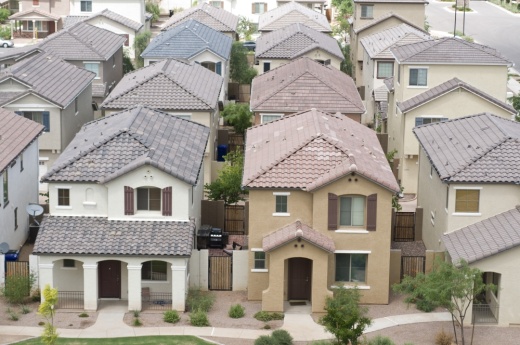The report—the third to be released by the Kinder Institute as part of its State of Housing analysis—was the first time researchers took a look at real estate trends since the start of the coronavirus pandemic. Kinder officials discussed its implications with a panel of housing and real estate experts June 22.
Home prices rose faster in the Harris County suburbs between 2020 and 2021 than in the city of Houston, said Luis Guajardo, an urban policy research manager with the Kinder Institute.
The median price of homes sold increased by 16% in Harris County while increasing 10% specifically in the city of Houston between the two years, Guajardo said. Typically, prices have increased by around 6% per year over the past decade, he said.
Although the percentage at which prices increased was smaller within Houston city limits, the median price itself was higher at roughly $315,000 in 2021, compared to around $285,000 countywide, according to Kinder.
The increase in prices appears to be driven by the sale of existing homes, which Guajardo said was a notable trend for what it means for the city's affordability.
"There's really a price convergence happening in 2021 where these wide disparities between new builds and existing homes is closing," he said. "That has serious implications for the lower end of the housing market. ... The existing housing stock or resale stock plays an overwhelming share of our affordable housing."
High volumes of both newly built and existing single-family homes were sold in the northwest section of Harris County in 2021, between I-10 West and I-45 North, according to the Kinder report. The northeast and southeast suburban parts of the county were also among the most active areas, including around Lake Houston.
Within the city of Houston, sales were highest around the Heights, Garden Oaks and parts of Spring Branch.
It also became notably harder for new homeowners to enter the market over the past decade, Guajardo said. The gap between the median sales price of homes sold and the purchasing power of the median renter grew from around $35,000 in 2011 to more than $135,000 in 2021, at which time the median renter could afford a home at roughly $150,000, far below the median sale price of $285,000 in Harris County.
Within the city of Houston, the effect was even more pronounced. The median renter can afford around $143,000, while the median sales price is around $315,000.
Future outlook
Following Kinder's presentation, a panel discussed the challenges in keeping housing affordable, the outlook for the future and strategies that could help.Tyron McDaniel, president and owner of Houston Vintage Homes, described the convergence of challenges facing affordable housing developers—namely rapidly rising land prices and costs of construction materials—as "death by a thousand cuts."
In flood-prone Houston, developers also have to take resiliency into account, which means spending more money on higher quality materials, he said.
"You have so many different battles you’re trying to fight at one time," McDaniel said.
Houston will continue to face affordability issues until housing supply is able to better keep up population growth, said Jonathan Campbell, vice president of investments at LCJ Companies, which specializes in development, construction and management of multifamily and townhome communities.
Campbell said this situation differs from traditional housing booms both in how constrained housing supply is and in how demand is being driven by low interest rates as opposed to wage growth. However, the resulting spike in home values still means higher tax bills for homeowners and higher rents for renters, he said.
"Local assessors are going to take full advantage of what they perceive to be a more traditional increase in values," he said. "There is a lag there that is going to take us years to recorrect local assessed values to get them back down to wherever market equilibrium ends up being."
Moving forward, increasing land prices raise questions about the single-family housing model, said Alexandra Miller, an independent urban planning consultant who played a key role in Harris County's My Home is Here housing needs assessment.
Instead of single-family development, Miller said cities like Houston should encourage projects that increase density, which can include traditional multifamily as well as two-family homes and accessory dwelling units—a secondary housing structure on a single-family lot sometimes referred to as a mother-in-law unit or carriage house.
"Land prices are just increasing, and the only way to help fix that is to help more people live on the land we already have that is close to jobs and services," Miller said.





